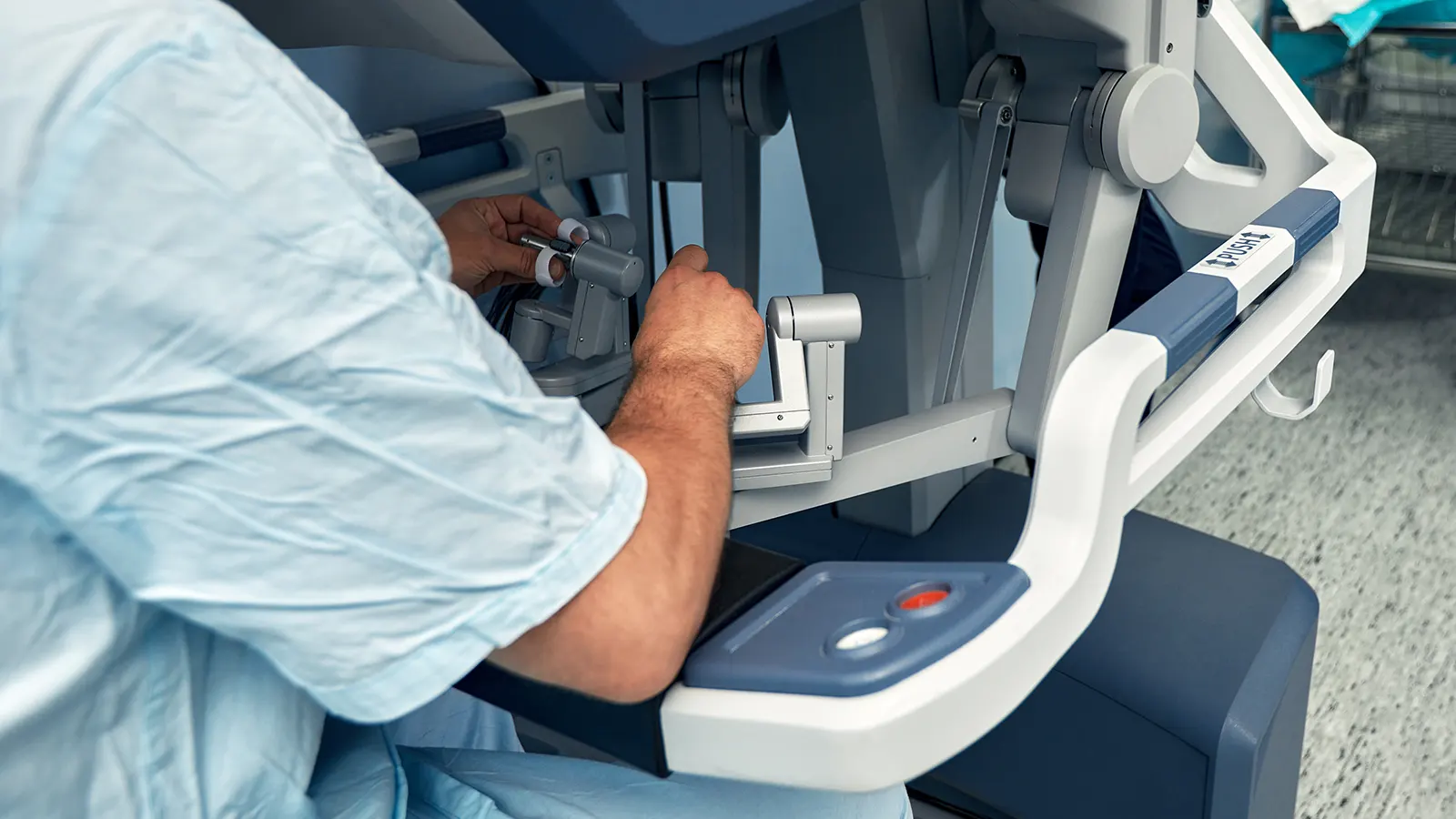Robotic prostate surgery is a modern surgical method used in the treatment of prostate cancer. This technique offers a minimally invasive approach through robotic systems, allowing patients to recover faster and experience fewer complications.
The Process of the Surgery
1. Preparation Stage
- Before the surgery, patients are evaluated by the anesthesiologist. Medication may be administered to reduce pre-operative stress.
- Patients are admitted to the hospital on the day of the surgery and are not advised to eat or drink anything after 12 at night.
2. Surgical Procedure
- In robotic prostate surgery, 4 8-12 mm incisions are usually made in the abdominal area. A camera providing 3D imaging is placed in one of these incisions, while surgical instruments are placed in the others.
- The 4 arms of the robot carry the robotic instruments that the surgeon controls via the console. This system allows the surgeon to make more precise movements.
3. Prostate Removal
- During the surgery, the cancerous prostate tissue is carefully removed. The bladder and urinary tract are reconnected with the help of the robotic system.
Advantages
Robotic prostate surgery has many advantages:
- Less Bleeding: The abdominal area is inflated with gas during surgery, reducing the risk of bleeding.
- Less Pain and Faster Recovery: Thanks to small incisions, patients feel less pain and recovery times are shorter.
- Lower Risk of Urinary Incontinence: The rate of urinary incontinence in surgeries performed with robotic surgery is around 5%, which is a significant advantage over other methods.
- Preservation of Sexual Functions: Thanks to the precision provided by robotic surgery, the erectile nerves are protected, which reduces the risk of sexual dysfunction.
Conclusion
Robotic prostate surgery is an effective and safe method in the treatment of prostate cancer. It has the potential to increase the quality of life of patients thanks to its minimally invasive structure. However, it is important to conduct a comprehensive evaluation before determining the appropriate treatment method for each patient.


